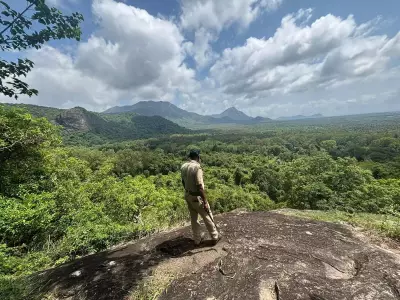
In the remote, snow-kissed valleys of Kinnaur, nestled within Himachal Pradesh's formidable mountain ranges, a unique cultural celebration unfolds with an air of profound mystery. Unlike India's more boisterous festivals filled with fireworks and massive crowds, the Raulane festival embraces ancient spiritual beliefs that have defined Himalayan communities for generations.
The Spiritual World of the Himalayas
Across the vast Himalayan belt—spanning Uttarakhand, Himachal Pradesh, Jammu & Kashmir, and the North-East regions—people have maintained deep-rooted beliefs in unseen beings that coexist with human communities. The geographical isolation of these mountain communities has shaped distinctive customs, while the powerful presence of nature has inspired their spiritual narratives.
Fairies, guardians, and wandering spirits are not considered mere fantasy in these regions but are treated as integral parts of collective memory and daily life. These beliefs form the foundation of cultural practices that continue to thrive in modern times.
Mountain Fairies: Protectors and Guides
In Uttarakhand, local folklore speaks of Aachhris—mountain fairies who serve as protectors and can assume human form at will. One enduring legend mentions Khait Parvat, a specific mountain believed to contain a gateway where these Aachhris guide people into their mystical world.
Kinnaur presents its own version of these celestial beings known as Sauni. During the harsh winter months when temperatures become life-threatening, villagers believe the Saunis descend from their celestial palaces to watch over human settlements. These protective fairies provide guidance, security, and emotional reassurance that the entire community depends upon throughout the difficult season.
The Raulane Ceremony: Rituals and Symbolism
The Raulane festival marks the ceremonial sending back of the Sauni fairies as winter gives way to spring. This is not a farewell but a grateful acknowledgment expressed through carefully preserved rituals, traditional dances, and community expressions of gratitude.
At the heart of the celebration are two central figures: the Raula and Raulane—men chosen to embody the ceremonial bride and groom. These participants dress in traditional Kinnauri woolen garments designed to withstand the freezing temperatures. Their faces remain hidden behind masks, while gloves cover their hands, creating an aura of mystery and transformation.
The bride figure wears elaborate headgear, bangles, and pendants, while the groom covers his face with distinctive red fabric. Together, they walk through the village, singing, laughing loudly, and performing sacred rituals that have been passed down through generations.
The ceremonial procession culminates at the Nagin Narayan temple, where the participants enter in full ceremonial attire to offer prayers. Following the prayers, they perform a slow, deeply symbolic dance that villagers believe serves as a direct channel of communication between humans and the Sauni spirits.
Every community member participates in some capacity—whether through chanting sacred verses, joining the dance steps, or simply bearing witness to the ceremony. This collective involvement reinforces social bonds and shared spiritual identity.
A Promise of Return
As the festival concludes, village elders lead the final rituals where the ceremonial couple receives blessings. The community collectively asks the Sauni fairies for protection throughout the coming year. According to local belief, the fairies depart for their heavenly meadows with the arrival of spring, and Raulane serves as the proper moment to express gratitude before their anticipated return in the next winter season.
The Raulane festival represents more than just a cultural event—it embodies the living connection between Himalayan communities and their spiritual heritage, preserving ancient traditions that continue to give meaning and structure to life in one of India's most challenging yet beautiful landscapes.





